Don't wanna be here? Send us removal request.
Text
An Integrated Approach For Complete Lightning Rod Protection

A lightning rod is a metal rod mounted on a structure and intended to protect the structure from a lightning strike. If lightning hits the structure, it will preferentially strike the rod and be conducted to ground through a wire instead of passing through the structure, where it could start a fire or cause electrocution. Lightning rods are also called finials, air terminals, or strike termination devices. This technology goes back about 250 years to when Benjamin Franklin developed it.
It was designed primarily for structural protection.
Today, society has evolved to include sophisticated communications, computers, networks, power, power generation, GPS, space travel, air travel, and many more, but many companies are still using a lightning protection unit that goes back to the 1700s. Today’s standards are still rooted in the Ben Franklin system, including the National Fire Protection Agency NFPA 780 and Underwriters Laboratory (UL). Their primary mission is founded on structural protection and personal safety, but they are not geared toward electronic integrity and lightning elimination.
That is why LEC recommends an integrated approach for complete Lightning rod protection.
LEC's Charge Transfer System (patented as the Dissipation Array System or DAS) uses a naturally occurring, scientific phenomenon called point discharge to retard the collection of lightning within a finite protection zone. LEC does not attract the lightning. LEC's system lowers the static field in the protected area long enough for the lightning strike to terminate outside the protected area. The DAS is engineered for the specific application or site.
With LEC’s unique combination of experienced consultants, engineers, and integrated services, you can rely on expert advice backed by over 50 years of experience. LEC's services have provided lightning protection, grounding, and surge protection solutions throughout multiple industries, providing greater lightning safety, savings, and efficiency using a proprietary approach to risk reduction. The necessary services are dependent on your company’s lightning safety requirements. They can be as simple as a technical review or as extensive as a site survey. An LEC sales associate will be able to help you determine what your needs are.
The LEC Advantage is the heart and soul of our products and services. LEC technical development superiority, consulting services, and lightning prevention solutions are customized for each client.
Read more...
youtube
#LightningDamage#LightningProtection#LightningProtectionDesign#LightningProtectionProducts#LightningProtectionSystems#LightningRodProtection#LightningSurgeProtectionDevices#FuelTankLightningProtection#GroundingRod#TankBatteryLightningProtection#Youtube
0 notes
Text
Lightning Rod Protection For Complete Protection Of Your Facility
Lightning strike is a giant spark of electricity that travels between the atmosphere and the ground, or within the atmosphere itself. It’s one of the most powerful forces in nature! Thus lightning rod protection is a necessity.
What happens during lightning strikes?
Build-up: Inside a thunderstorm cloud, areas with positive and negative charges build up. Air normally acts as an insulator, preventing these charges from discharging.
Breakdown: When the charge difference gets strong enough, the air can no longer insulate, and a rapid discharge of electricity occurs – that’s the lightning strike!
The Flash: The discharge heats the air around it to an incredibly high temperature, causing it to glow brightly – that’s the visible lightning bolt we see.
Types of Strikes:
Lightning can travel between clouds (cloud-to-cloud), within a cloud (intra-cloud), or between a cloud and the ground (cloud-to-ground). Cloud-to-ground strikes are the ones that can be dangerous to people and objects on the ground.
First known lightning rod protection systems were invented by Benjamin Franklin in 1753. This type of lightning protectors were made up of a typically 6 metres high tapered copper rod which covered the structure in order to be protected and this rods were connected to two separate down conductors and two earthing system as well.

With advancement in technology, and LEC’s research and development, the world now has the charge transfer system.
It provides a high level of charge dissipation. It is constructed of stainless steel and utilizes four stainless steel dissipation brushes attached to a single elevation conductor for higher dissipation on a single mount.
CTS collects the induced charge developed by thunderstorm clouds from a designated protected area of the earth and transfers this charge through the ionizer into the surrounding air, this preventing direct strike.
Lightning strikes can be a serious threat to your valuable electronics. Not only can they cause immediate damage, but they can also lead to long-term issues that may not be immediately apparent.
We are Pioneers in:
Chemical Earthing Installations – For Industrial and Commercial Premises
Lightning Protection System – For Remote Terrains, Industrial and Commercial structures
Surge protection system – For Remote Terrains, Industrial and Commercial structures
To get lightning rod protection for your facility, connect with us.
Read more
youtube
#LightningDamage LightningProtection LightningProtectionDesign LightningProtectionProducts LightningProtectionSystems LightningRodProtect#Youtube
0 notes
Text
How Can LEC Help In Lightning Protection?
In recent years, changes in the global environment, such as global warming, extreme weather conditions, heat islands, and other phenomenon has led to increased heavy rain and lightning. On the other hand, advanced precision electronic equipment has become the need of the hour for every facility. Thus, preventing equipment damage and breakdowns caused by direct lightning strikes through lightning protection system has become the need of the hour.
Lightning strike can cause a fire, explosion, chemical release or mechanical disruptions within or around your facility.

At LEC, we are fully aware of these risks and the need for a more proactive lightning protection system. With over 5 decades of experience, research and development, support and expertise, we have assisted thousands of businesses, both large and small, to achieve effective lightning protection.
Our LPS are engineered with advanced technology and consist of the four key components – air terminals, conductor/bonding, grounding, and transient/surge protection, while our patented LPS works on CTS (Charge Transfer System) technology.
The CTS collects the induced charge developed by thunderstorm clouds from a designated protected area of the earth and transfers this charge through the ionizer into the surrounding air. The resulting difference in electrical potential between the protected site and the storm clouds is reduced thereby delaying the formation of an upward streamer from the protected site and preventing direct strikes.
The charge collector is an interconnected system of grounding electrodes and conductor designed to collect and funnel electrical charge to the ionizers. One of our patented CTS is called Dissipation Array System (DAS).
How can LEC help?
We have a very efficient technical workforce. Our personnel are responsible for installing all types of lightning protection and surge protection systems. We have all resources, materials, and the latest plant, machinery, and vehicle to work on any size project – large scale to a remote mountaintop. Our work progress and quality of workmanship are monitored regularly through various control and testing systems.
We will complete a full site survey and then use the results to design a lightning protection system that would also include recommendations for surge protection.
Contact us to find out more.
youtube
#LightningDamage#LightningProtection#LightningProtectionDesign#LightningProtectionProducts#LightningProtectionSystems#LightningRodProtection#LightningSurgeProtectionDevices#FuelTankLightningProtection#GroundingRod#TankBatteryLightningProtection#Youtube
0 notes
Text
5 Reasons To Join Hands With LEC Lightning Rod Protection
Lightning kills more people than tornadoes and hurricanes combined. And for each death caused by lightning, roughly ten more people are injured. The majority of these lightning injuries leave victims with serious, life-threatening injuries.
The good news is that lightning death and injury can be prevented through lightning rod protection. LEC offers superior lightning protection systems for all types of commercial and industrial buildings.

Why engage us for lightning rod protection services?
Our customer service: Our approach is to provide our customers with the best level of service from initial enquiry to completion and then ongoing through our maintenance services. We work within your timeframe and budget to provide a cost-effective and efficient outcome. Contact our friendly yet professional team for a consultation today.
Experience: Over 50 years and counting. We combine our five decades of experience in providing solutions for lightning and overvoltage issues with our firm commitment to honesty, integrity, loyalty, and total customer service. LEC is well-placed to address any lightning-related problems. We have worked with countless industries to provide efficient and prompt lightning protection services and solutions.
Safety first: Safety is at the heart of LEC. We provide extensive training to all our employees, invest in modern equipment, and continuously develop methods so our work is carried out safely and in accordance with national and international standards. Our approach ensures that work is completed in a safe and professional manner.
Testing and certification: All lightning rod protection systems are fully inspected by competent personnel using calibrated test equipment. Ideally, testing and certification must occur every two years. LEC has experienced engineers and technicians with access to the latest tests and measurement equipment. Maintenance work is also recommended if the testing and inspection reveal any deterioration in the level of protection.
Warranty: last but not least, our ‘no strike’ warranty. Our “No-Strike” warranty ensures complete protection on all LEC-supervised installations. (subject to terms and conditions outlining inspection and maintenance).
We offer a comprehensive and customized lightning rod protection system solution, from design, manufacturing, and supply to installation, testing, commissioning, and maintenance.
Connect with us to get protected.
#lightning protection#grounding rod#lightning damage#lightning protection design#lightning protection products#lightning protection systems#tank battery lightning protection#lightning surge protection devices#lightning rod protection#fuel tank lightning protection
0 notes
Text
Does DAS Protect A Facility From Lightning Damage?
Lightning strikes can damage manufacturing units by causing fires, explosions, structural damage, electrical surges, and equipment failure. These can lead to production downtime and financial losses. Lightning can also destroy inventory and essential equipment, erase vital computer files, and damage customer relationships due to production delays or temporary closures.
The potential lightning damage posed by lightning strikes necessitates installing effective lightning protection systems.
Charge transfer systems are systems that use point discharge to protect an area or object from a lightning strike. Static electricity in the atmosphere is dissipated back into a ground system, making it less attractive for lightning to strike.
Our ability to deal intelligently with lightning damage is a little more advanced than Benjamin Franklin’s approach.
With a rich history and over 50 years of expertise, LEC has been at the forefront of lightning protection systems. From risk assessment to dissipation array systems to surge protection systems, we offer comprehensive solutions to safeguard structures and assets from lightning damage. As experts in the field, we understand the importance of safeguarding structures and assets from the increasing frequency and intensity of lightning events. The evolving weather landscape, record-breaking events, and heightened lightning activity highlight the urgent demand for comprehensive lightning protection systems. Our solutions are effective and reliable, ensuring your peace of mind.

Case Study:
Georgia Pacific, one of the world’s leading manufacturers of tissue, pulp, paper, packaging, building products, and related chemicals, has utilized LEC lightning protection products at four plants since 2001. Georgia Pacific’s primary problem was unplanned shutdowns of the Paper Machines attributable to direct strikes to the three 380-ft tall stacks for their in-house power generation plants. There has not been lightning damage to the paper machines since the Dissipation Array System (DAS) solution was installed.
When installed, maintained, and supervised by LEC, DAS prevents direct strikes with a 99% success rate, minimizing the risks to facilities and operations. The benefits can be substantial, resulting in a healthier bottom line by reducing downtime, maintenance and repairs, while increasing reliability and personnel safety. With our solutions, you can significantly reduce the financial burden of potential lightning damage.
By leveraging our expertise and incorporating the latest advancements in lightning protection technology, you can ensure robust protection for critical infrastructure and assets against lightning damage. With LEC, you get service and assurance from our decades-long experience and commitment to excellence.
Read More...
#Lightning Damage#Lightning Protection#Lightning Protection Design#Lightning Protection Products#Lightning Protection Systems#Lightning Rod Protection#Lightning Surge Protection Devices#Fuel Tank Lightning Protection#Grounding Rod#Tank Battery Lightning Protection
0 notes
Text
Charge Transfer System – A Lightning Protection System By LEC
Lightning, with its intense electrical energy, is a potent force of nature. The moment a lightning bolt strikes, it can bring about catastrophic damage. It’s not just about the visible flash or the deafening thunderclap; the risks associated with lightning extend far beyond the initial shock. Lightning strikes can cause fires, damage structures, disrupt electrical systems, and harm lives.
Every flash of lightning is potentially carrying millions of volts of electricity. Contrary to popular belief, lightning can strike anywhere repeatedly; it doesn’t always strike tall buildings and can even strike up to 80 kilometers away from the point of impact.
That’s where lightning protection comes into play as a guardian against these potentially devastating effects.
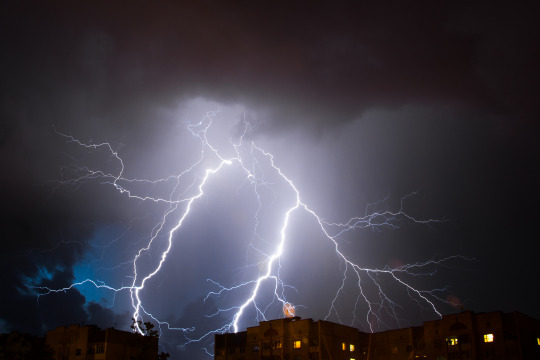
An outdoor lightning protection installation is designed to protect critical structures, equipment, and facilities against lightning's direct and indirect effects.
The main components are:
One or more ionizers - provide a means for point discharge to occur.
Down conductor - provides the electrical connection between the charge collector and the ionizers.
Charge collector - an interconnected system of grounding electrodes and conductors designed to collect and funnel electrical charge to the ionizers.
This lightning protection system by LEC is called a Charge Transfer System.
It’s intended to prevent lightning strikes within a protected zone or area. The CTS collects the induced charge developed by thunderstorm clouds from a designated protected area of the earth and transfers this charge through the ionizer into the surrounding air.
Some lightning protection system that functions as CTS are:
Dissipation Array System (DAS) is the name of our patented CTS. The DAS is designed to function in the Prevention Mode with a combination of different multipoint ionizers.
SBIs and SBTs are multipoint ionizers that can be deployed along with DAS to function in the Prevention Mode. Multiple units of either SBI or SBT can be deployed without DAS to function in the CTS Collection Mode. They are normally mounted in groups on elevated structures.
Ion Plasma Generators (IPG) is a multipoint ionizer that functions only in the Collection Mode.
Protect your assets, ensure your operations continue uninterrupted, and safeguard the lives within your structure. Connect with Lightning Eliminators & Consultant Inc. today to explore how we can tailor a lightning protection solution to your specific needs, bringing you unparalleled protection.
Read More...
#Lightning Damage#Lightning Protection#Lightning Protection Design#Lightning Protection Products#Lightning Protection Systems#Lightning Rod Protection#Lightning Surge Protection Devices#Fuel Tank Lightning Protection#Grounding Rod#Tank Battery Lightning Protection
0 notes
Text
What Can Be Done To Provide Lightning Rod Protection?
Lightning is a powerful natural force capable of discharging up to 100 million volts of electricity in a single strike. This immense energy can wreak havoc on electrical and electronic systems, leading to costly downtime and repairs.
What can be done to provide lightning rod protection?
Fortunately, there are measures you can put in place to provide different levels of lightning protection to protect your facility and electronics equipment that can provide protection even in the event of a nearby hit:
Make sure to have an earth ground plan at your facility
Make sure that instrumentation is properly grounded.
Make sure that your equipment is surge-protected
The use of specialized lightning rod protection equipment is the most effective way to reduce the risk of damage to infrastructure or fires and explosions caused by lightning.
LEC specializes in providing comprehensive solutions designed to address the lightning challenges faced by manufacturing industries. Our team of experts brings a deep understanding of the industry and technical expertise in lightning protection and risk mitigation. We offer a range of specialized services tailored to safeguard the productivity, profitability, and safety of manufacturing operations.
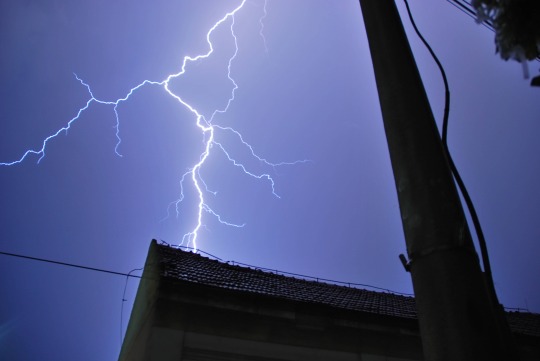
Our LEC services include:
Design and engineering of turnkey lightning protection solutions
On-site surveys and on-site audits specific to lightning
Procurement, management, and installation of best-in-class equipment
Our solutions encompass surge protection devices, advanced grounding systems, lightning rods, and other industry-standard measures to safeguard critical equipment, control systems, and operational facilities.
The LEC's Advantage over the other vendors is our unique market-leading experience, knowledge, and expertise. We have an excellent library of technical articles, research papers, client success stories, and product presentations that document the success of our patented solutions. The LEC management team members are recognized experts in the field of lighting control and prevention, with a strong background in business and financial leadership. We understand the need to justify and conduct a cost-benefit analysis of any expenditure. At the same time, we also know first-hand that any reasonable risk analysis will support exploring our products and services. The LEC Advantage is the heart and soul of our products and services. LEC technical development superiority, consulting services, and lightning rod protection solutions are customized for each client.
Read More...
#Lightning Damage#Lightning Protection#Lightning Protection Design#Lightning Protection Products#Lightning Protection Systems#Lightning Rod Protection#Lightning Surge Protection Devices#Fuel Tank Lightning Protection#Grounding Rod#Tank Battery Lightning Protection
0 notes
Text
Keep Yourself Protected With LEC’s Grounding Rod
Grounding protection is referred to as protective earthing. It is an essential technical measure taken to prevent personal electric shock and ensure the regular operation of electrical equipment.
The basic principle of grounding rod and protection is to limit the leakage current of the leakage device to the ground so that it does not exceed a specific safety range. Once the protection device exceeds a particular set value, the power supply can be automatically cut off.
The grounding protection has the following advantages:
It limits the voltage that will be applied to the equipment insulation.
Recall that the materials used in the insulation have to be able to withstand the applied voltage.
Limits system voltage to ground or equipment enclosures under normal and fault conditions, increasing personnel safety.
Minimizes potential transient overvoltages.
Provides for a source of ground-fault current relaying, allowing fast fault clearing.
Transient overvoltages are daily events in electric power systems. Switching is their main initiator, but switching surges are relatively easy to handle. However, lightning surges are the most severe and challenging to manage. They may increase the system voltage to many times the rated voltage. If the equipment in the power system is not protected against lightning surges, considerable damage will occur.
LEC’s lightning protection system diverts lightning and provides a specific path for conducting the surges safely to the ground by adequate down conductors to grounding rod. Thus, it helps prevent disastrous events like fires, injuries, and deaths.

Their patented Chem-Rod Grounding Electrode is the latest electrode used worldwide. It provides a low surge impedance as well as low resistance earth contact. The ground augmentation fill is the key component that makes this Chem-Rod maintenance-free, giving a longer performance and ensuring the best grounding connection possible. It has a large conductive surface but takes up far less land mass and can easily replace ten conventional grounding rods.
In conclusion, grounding is essential in preventing electrical faults from becoming dangerous by providing a safe pathway for electric currents to travel without risking human life or property damage. Keep yourself protected adequately with grounded equipment today.
Get in touch with us today.
Our Smart Ground Testing services are engineered to offer reliable, very practical solutions to improve the grounding system, and its audits are highly accurate. Don't wait until an accident happens before taking action.
Read more...
#Lightning Damage#Lightning Protection#Lightning Protection Design#Lightning Protection Products#Lightning Protection Systems#Lightning Rod Protection#Lightning Surge Protection Devices#Fuel Tank Lightning Protection#Grounding Rod#Tank Battery Lightning Protection
0 notes
Text
Meet The Best Low Resistant, High-Quality Grounding Rod
You have decided to install a lightning protection system, including a grounding rod and surge protection device, in your facility. By doing this, you know that it will protect people from electrical shock, help safeguard expensive electronic equipment, limit neutral to ground voltage, and satisfy NEC along the way.
Now, the big question is, which is the best low-resistant, high-quality grounding rod?
An efficient grounding system is critical to personnel safety and uninterrupted operations. However conventional ground rods are typically insufficient for industrial uses where target resistance can be less than 1 ohm.
An earthing system or grounding system connects specific parts of an electrical installation with the Earth's conductive surface for safety and functional purposes. Regulations for earthing systems vary considerably among countries, though many follow the recommendations of the International Electrotechnical Commission (IEC).
Engineered to meet applicable design and safety standards, the Chem-Rod, a patented grounding rod by LEC, is uniquely suited for both general grounding and as the foundation of a complete lightning protection system. The Chem-Rod solves problems found with conventional ground rods by requiring less real estate and fewer electrodes to meet specified resistance.
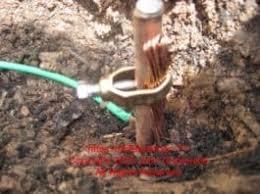
This grounding rod is constructed to comply with UL requirements. Our Chem rod is a large copper tube with extremely low AC impedance, and each Chem-Rod creates an optimal electrical connection to the earth with a large conductive surface. The earth/electrode interface is further enhanced by conductive backfill and electrolytic salts, ensuring a consistent path to the ground.
It’s Efficient
Lower resistance/impedance achieved with fewer rods
It’s Consistent
Maintains low resistance in changing temperature and soil conditions
It’s Economical
Cost-effective for reaching target resistance at large sites or where space is limited
It’s Reliable
Service life of over 30 years with no increase in resistance when properly maintained
It’s Low-Maintenance
Designed for easy inspection and refill
With an effective lightning protection, surge protection, and grounding system in place, the excess electricity will be diverted to the earth, thereby protecting your sensitive electronics and personnel.
Installing a grounding rod is a necessary and smart move. Get started today!
#Lightning Damage#Lightning Protection#Lightning Protection Design#Lightning Protection Products#Lightning Protection Systems#Lightning Rod Protection#Lightning Surge Protection Devices#Fuel Tank Lightning Protection#Grounding Rod#Tank Battery Lightning Protection
0 notes
Text
3 Very Important Steps You Should Be Taking To Prevent Lightning Damage
Fires resulting from lightning strikes cause 3 to 5 percent of all U.S. commercial property insurance claims, and beyond the fire is the destruction of electrical wires and infrastructure that supports everything we do to communicate and conduct business.
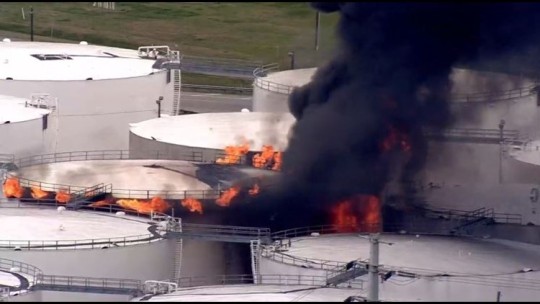
LEC shares some steps you should be taking to prevent lightning damage:
Lightning rods to disperse direct and indirect strikes
The best protection from lightning damage to a facility are modern lightning rods, that are part of complete lightning protection systems that work to safely direct lightning around or through a facility without allowing the excess voltage to damage or destroy structures and assets. Modern systems, such as our patented DAS, create a lightning prevention shield that eliminates the possibility of direct lightning damage and side-flash, which is an arc of electricity that can jump across gaps and damage devices, and even injure bystanders.
2. Voltage arresters help stop excess voltage traveling from utility lines or other buildings
Also known as surge protectors, these should be used between your wall outlets and your electronics. Aside from the fact that they successfully divide the more delicate interior wiring and equipment from the high-voltage exterior power lines and wiring, most of the time, they will shield the electronics within your building from potentially harmful voltage spikes caused by indirect lightning strikes or problems with utility lines. SPDs help to protect your refrigeration units, air conditioning systems, web and data servers, and other devices that are impractical to unplug during a storm.
3. A good disaster recovery plan helps get your business back on track when things go wrong
All businesses, particularly those that depend on electronics such as point-of-sale systems and IT phone services, ought to have a disaster recovery plan in place. A solid disaster recovery plan minimizes the possibility of downtime and contains procedures for mitigating the effects of a disaster. Insurance may pay for damaged equipment, but prolonged downtime can bankrupt nearly any company unless you have a well-thought-out plan in place for swiftly restarting operations.
Fortunately, taking advantage of all these tips can help keep your downtime to a minimum, and make it easier for your business to avoid lightning damage and bounce back from one.
Connect with our lightning eliminator experts to know more.
#Lightning Damage#Lightning Protection#Lightning Protection Design#Lightning Protection Products#Lightning Protection Systems#Lightning Rod Protection#Lightning Surge Protection Devices#Fuel Tank Lightning Protection#Grounding Rod#Tank Battery Lightning Protection
0 notes
Text
4 Ways To Minimise And Even Eliminate Lightning Damage
Do you know that a lightning protection system designed and installed to international standards reduces the risk of lightning damage to a structure and the systems and people within it?
The cost of lightning damage is downtime, reduced production, and industrial electronic repairs or replacement costs. There are some things you can do to help minimize lightning damage:
Diversion: ground metallic structures
Attenuation: careful wiring such as metallic raceways, cable shields, twisted pairs, extensive grounding and earthing
Surge Protector: Lightning damage can be caused through power surges called “transients,” which happen when lightning strikes nearby, hitting transmitting devices such as metallic plant equipment, pipes, or wiring. Even the magnetic field associated with lightning can affect computers nearby, causing damage that might not show up until days or weeks later. Install up-to-date surge protection devices at each point close to the equipment to be protected or where the conductor enters and leaves a structure.
The best protection from lightning damage to a building is also the oldest: Lightning protection system. Full lightning protection systems with grounding and surge protection devices for buildings and other structures can be designed, manufactured, and installed by LEC so as to divert high levels of electrical current generated by lightning strikes from the area of protection.
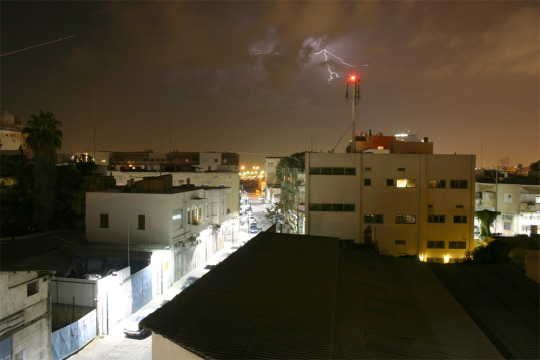
We have 3 individual product lines that can be integrated together for a comprehensive lightning protection system.
These product lines include lightning prevention products like our Dissipation Array Systems (DAS), Spine Ball Ionizers (SBI), Spine Ball Terminals (SBT), Streamer Delaying Air Terminals (SDAT), Grounding and Surge solutions.
By installing the Dissipation Array System, patented by LEC, you can limit the build-up of static charge in the protection area and discourage secondary and EMP effects, damage to equipment, and disruptions in operations caused by direct or nearby lightning strikes, thereby enhancing site reliability.
Certified specialists will install lightning protection systems on your property in accordance with the national safety standards of the National Fire Protection Association (NFPA) and Underwriters Laboratories (UL) to protect it from lightning strikes. Our systems shield your facility by eliminating the streamer formation over the protected area, thus preventing lightning damage.
Contact LEC for a design tailored to your facility's requirements.
Read More...
#Lightning Damage#Lightning Protection#Lightning Protection Design#Lightning Protection Products#Lightning Protection Systems#Lightning Rod Protection#Lightning Surge Protection Devices#Fuel Tank Lightning Protection#Grounding Rod#Tank Battery Lightning Protection
0 notes
Text
Facts About Grounding Rod That You Should Know
Grounding Rods have various functions & advantages. They are also known as electrodes or earth rods, and their fittings are used for effective earthing systems in overhead and underground electricity distribution and transmission networks. These are used singularly or in groups to:
Form a ground field.
Create a path to dissipate static discharge voltages (lightning or other forms) to the earth.
Ensure the right connection to the ground in all kinds of soil conditions and deliver high fault current performance on low voltage, medium voltage, high voltage, tower, and power distribution systems.
Without an effective grounding system, you could be exposed to the risk of electric shock, not to mention instrumentation errors, harmonic distortion issues, power factor problems, and a host of possible intermittent dilemmas. If fault currents have no path to the ground through a properly designed and maintained grounding system, they will find unintended paths that could include equipment and people.
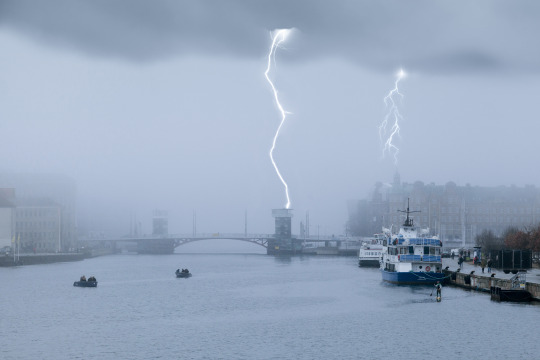
First, a few facts about a grounding rod:
They do not attract lightning
They do not guarantee a lightning strike
They do direct electric current into the ground
They help protect structures when properly installed
While oftentimes, much attention is given to proper design, it is equally, if not more important, to select quality materials for the grounding rod that meet the application needs of the building. This will go a long way towards ensuring the system lasts and provides continuous and safe pathways for both electrical faults and lightning discharge currents.
LEC recommends
Copper grounding rods by LEC are an excellent addition to the tools that we use to reduce ground system DC resistances and AC impedances. This provides a much better environment in which a direct lightning strike can be shunted to the ground. Copper grounding rods are designed to meet UL requirements. Our Chem Rod is a large-diameter copper tube with very low AC impedance. Each Chem-Rod creates the perfect electrical connection to the earth with a large conductor surface. The earth/electrode interface is further improved by conductive backfill and electrolytic salts to create a consistent conductive pathway to the ground.
If you have any questions regarding this piece or require further information, please do not hesitate to contact us.
#Lightning Damage#Lightning Protection#Lightning Protection Design#Lightning Protection Products#Lightning Protection Systems#Lightning Rod Protection#Lightning Surge Protection Devices#Fuel Tank Lightning Protection#Grounding Rod#Tank Battery Lightning Protection
0 notes
Text
Exploring The Incredible Impact Of Grounding Rod
When lightning strikes something, it looks for a path of least resistance. A grounding rod and wires are used to conduct the current from the lightning to the ground. This allows the lightning to pass through your expensive electronics instead of through it. Grounding rods and wires can also be used to create common ground: when a copper rod is driven into the ground, electric and electronic equipment is connected to it with wires or straps. This creates a path of least impediment for all your equipment in case the lightning causes an electrical surge.
LEC’s grounding rod also known as Chem-Rod, is ultra-efficient and can be used to replace as many as ten conventional rods.
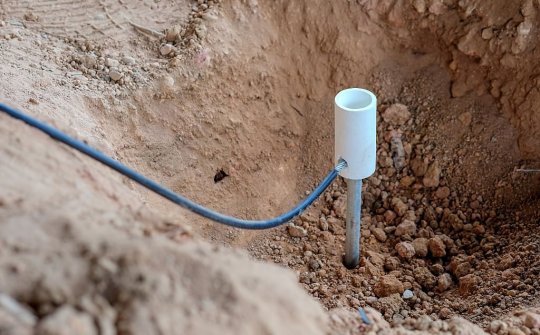
Advantages are:
Large surface area – the wider 25/8 inch diameter provides a larger surface area for a better connection to the earth.
Electrolytic Salts – In the presence of moisture, these salts dissolve and seep out of leach holes along with the electrode. The salts continually increase the soil’s conductivity, further reducing impedance and resistance.
Soil augmentation: GAF (Grounding Augmentation Fill) is a combination of organic soil materials that optimize the soil's conductivity around the Chem-Rod. Increasing the amount of GAF can decrease the overall system resistance, thereby increasing the system’s efficiency.
Easy Refills: Every Chem-rod comes with a standard removable cap and access cover for easy maintenance of the ground salt charge
Optimized pigtail: the 2-foot long, 4/0 AWG stranded pigtail is exothermically welded to the body of the Chem-Rod
Application: The Chem-Rod improves reliability for many applications, including:
Lightning protection systems
Prevention of accidents caused by static charge and stray currents
Protection of central communications, electronics, and AC power systems
Meeting grounding safety requirements for electrical substations
Ground fault neutralization
Safeguarding critical instrumentation and process-control equipment
Our services: Before a grounding rod or an entire grounding system can be installed, a few other activities must first be undertaken.
Risk assessment.
Complete soil resistivity survey.
Consulting to assess the practicality and usefulness of a given area to plan a customized solution.
Designing a complete solution to solve even the most complex challenges.
Installation of the approved system keeping safety in mind.
Audits, testing, and commissioning services are generally required at the end of the installation process.
Lightning Eliminators & Consultants Inc. are pioneers in this field for decades, and our name is synonymous with international standard protection and no strike warranty.
Continue Reading...
#Lightning Damage#Lightning Protection#Lightning Protection Design#Lightning Protection Products#Lightning Protection Systems#Lightning Rod Protection#Lightning Surge Protection Devices#Fuel Tank Lightning Protection#Grounding Rod#Tank Battery Lightning Protection
0 notes
Text
Lightning Protection – What You Need To Know
The modern industrial business landscape is one that relies heavily on technologically advanced, mission-specific equipment in order to perform critical tasks. Most times, they provide only minimal levels of protection against the elements, leaving them open to potential damage from both natural and manmade sources – violent electrical storms and lightning strikes, nor the resulting power surges, which account for a large percentage of damage to critical components in the field.
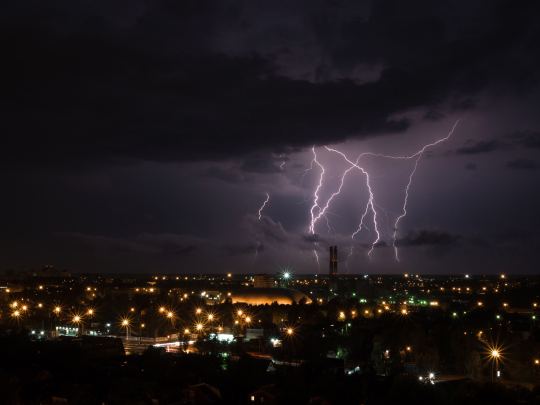
Lightning protection systems are used to prevent or lessen lightning strike damage to buildings. They protect the internal electrical components of a building, helping to prevent fires or electrocution. Lightning protection comes in the form of a lightning conductor, usually a metal rod, mounted on a building to protect it from lightning strikes. The system will intercept a strike, so if lightning hits the building, the lightning rod will be hit first, causing the strike to be conducted through a wire and passing through to the ground safely.
This is the traditional method of lightning protection. The more modern approach is called a Dissipation Array System, developed and patented by LEC. DAS does not attract the lightning. This system lowers the static field in the protected area long enough for the lightning strike to terminate outside the protected area. In other words, it prevents upward-rising lightning leaders (or streamers) from being created on the protected structure. Without these upward-rising leaders, which are essential for lightning collection, the lightning will not be able to hit that structure.
Our products protect:
Remote radio head architectures (these support the implementation of 4G and 5G networks). These systems ensure network uptime and preserve the carrier’s budgets allocated for maintenance and repairs.
Electric supply lines. These lightning protection systems are deployed at multiple points along the power supply cables and connection points to mitigate the risk to the equipment caused due to an electrical surge. They regulate the flow of electricity and keep the systems online without failure.
Lightning Eliminators & Consultant Inc. have been at the forefront of industrial lightning protection systems for the past five decades and have the product and expertise to protect any facility from a lightning strike.
Get protected today!
#Lightning Damage#Lightning Protection#Lightning Protection Design#Lightning Protection Products#Lightning Protection Systems#Lightning Rod Protection#Lightning Surge Protection Devices#Fuel Tank Lightning Protection#Grounding Rod
1 note
·
View note
Text
The Importance Of Lightning Surge Protection Devices For Your Facility
Did you know that during lightning storms, transient overvoltage from lightning up to 1km away can damage electronic equipment connected to a power network? Since power surges occur across all attached components within your industrial electrical system, this means they can cause immense damage to your entire organization. Measures that act to prevent power surge damage to your critical systems and components ensure you won’t have to deal with costly repairs.
Two ways to prevent power surge damage:
1. Lightning Surge Protection Devices
To prevent lightning damage, surge protection devices (SPDs, also known as lightning arresters) should be added to conductors entering and exiting the building. This provides complete protection for your electronic equipment from lightning-induced transients traveling along electrical and communication cables, as well as data lines.
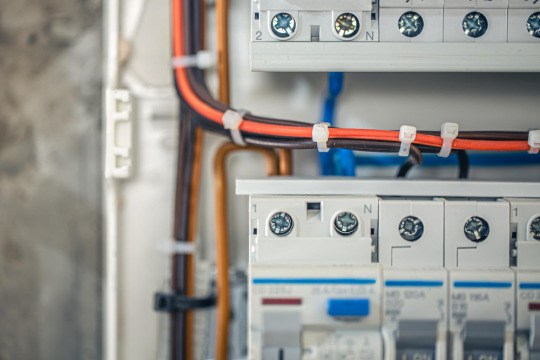
A surge suppressor is a device that becomes conductive at some voltage. As the potential rises and the surge suppression becomes conductive, it shunts the surge back to where it came. This is required by NFPA 780 and UL both on all services where they enter the structure. SPDs are used for protection against surges from power lines, signal lines, feeder lines, and other various line voltage surges and can be used as class 1, 2 & 3 levels of protection.
A lightning surge protection device functions in three ways:
It prevents voltage spikes from stressing electrical equipment
It ensures that the surge current flows away from the equipment
It prevents secondary, induced voltages (created from the surge current) from damaging the equipment.
2. Bonding and Grounding
The second way to reduce power surge damage is by addressing bonding and grounding. The purpose of bonding is to ensure that, in the event of a lightning discharge, any sparking or flashover of the lightning current to conductive parts of the structure, for example, water pipes, cables, etc., is avoided. Grounding is also critical to personnel and equipment safety as it ensures more effective surge protection.
Lightning Surge Protection Devices by LEC is one of the best investments against unlikely events like a lightning strike. We have a track record of cost saving, uptime, and increased client satisfaction.
If you are looking for professional services without fuss and a price that fits your business budget, contact or Lightning Eliminator specialist today.
Continue Reading...
#Lightning Damage#Lightning Protection#Lightning Protection Design#Lightning Protection Products#Lightning Protection Systems#Lightning Rod Protection#Tank Battery Lightning Protection#Lightning Surge Protection Devices#Fuel Tank Lightning Protection#Grounding Rod
1 note
·
View note
Text
5 Types Of Lightning Damage And How To Control Them
As solar heat warms the ground, air currents rise to form cumulonimbus clouds, so-called thunderclouds. At altitudes above 5 km, the air temperature is below freezing, so atmospheric moisture turns into tiny ice particles. Collisions between these particles generate friction charges, so the upper part of the cloud has a positive charge, and the lower part has a negative charge, eventually resulting in an electrical discharge. When the discharge occurs within a cloud or clouds, it’s called cloud-to-cloud lightning. The phenomenon of a discharge powerfully striking the ground is a lightning strike.
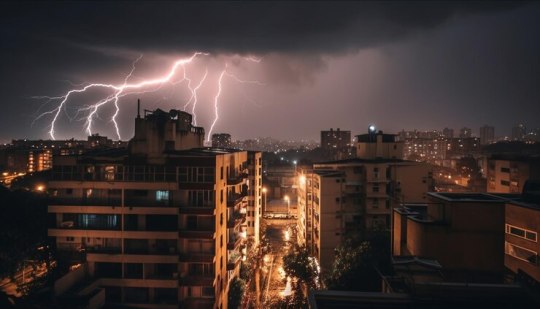
Types of lightning damage:
Lightning strikes to the ground can cause various kinds of damage. In general, there are two types, damage from direct lightning strikes and induced damage from lightning-generated electromagnetic waves.
When lightning strikes a person, the current may travel through the human body (with a high mortality rate) or travel mainly along the body’s surface before reaching the ground.
Voltage surges in electrical devices can cause a dielectric breakdown, shutdowns, degradation, etc. Also, damage to network devices, shutdowns, malfunctions, and other damage from momentary voltage drops due to lightning strikes and lightning surges that penetrate networks are increasing.
Lightning near a power line can increase the amount of electrical current flowing to a wall outlet. This extra burst of electricity can often lead to computer and appliance damage.
Lightning can cause a fire because it generates large amounts of heat.
Therefore, understanding the factors influencing lightning to reduce lightning damage is fundamental. Good LPS aims to minimize the faults caused by lightning strikes.
Controlling lightning damage
We have three individual product lines that can be integrated together for a comprehensive lightning protection system.
Structural Lightning Protection
Bonding and Grounding
Transient Voltage Surge Suppression
The traditional lightning protection system focuses on storing the lightning charge instead of eliminating it. This outdated system can cause massive damage to structures and property loss. A state-of-the-art lightning protection technology is the charge transfer system (CTS). It’s based on physics and engineering principles and is intended to prevent a lightning strike from occurring within a protected zone.
Lightning Eliminators is a one-stop shop for lightning safety products. Connect with us.
#Lightning Damage#Lightning Protection#Lightning Protection Design#Lightning Protection Products#Lightning Protection Systems#Lightning Rod Protection#Tank Battery Lightning Protection#Lightning Surge Protection Devices#Fuel Tank Lightning Protection#Grounding Rod
1 note
·
View note
Text
Find Out Why Our Lightning Rod Protection System Is Best For Your Facility
Did you know that replacing the conventional lightning rod protection system with a charge transfer system (CTS) significantly improves the lightning protection of structures against direct lightning strokes? CTS consists of four major parts: an ionizer, a grounding system, a ground current collector, and a grounding conductor connecting the ionizer to the grounding system.
The charge collector is an interconnected system of grounding electrodes and conductors designed to collect and funnel electrical charge to the ionizers. The down conductor(s) provide the electrical connection between the charge collector and the ionizers. The ionizers provide a means for point discharge to occur.
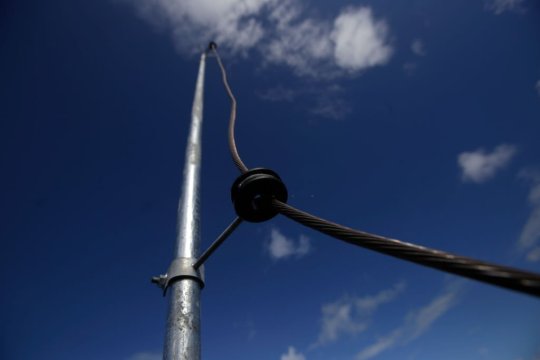
All LEC lightning prevention products discussed below function as CTS.
Dissipation Array System (DAS) is the name for our patented CTS. The DAS is designed with a combination of different multipoint ionizers to function in the prevention mode. It prevents direct lightning strikes by reducing the electric field to below lightning-collection levels within the protected area.
SBIs and SBTs are multipoint ionizers that can be deployed along with DAS to function in the prevention mode. Multiple units of SBIs or SBTs can be deployed without DAS to function in the CTS collection mode. They are typically mounted in groups on elevated structures.
Ion Plasma Generators are multipoint ionizer that functions only in the Collection Mode.
How do you know this is your facility's best lightning rod protection system?
Start by researching lightning protection and lightning protection standards at sites like the National Weather Service, the National Severe Storms Laboratory, and other lightning protection Standards like NFPA 780, UL96, etc.
Once you have learned the basics of lightning protection, and then visit our website – www.lightningprotection.com.
Here you will find that our solutions employ the same scientific methods you learned from your research and that our patented products are designed to meet the most rigorous industry standards.
Then schedule a chat with our engineers to discuss your specific situation and assets needing lightning protection.
LEC enjoys a worldwide reputation as a foremost specialist in lightning rod protection, and we have also proven our commitment to research and development. Our name is synonymous with international standard protection, no strike warranty, providing comprehensive and integral lightning protection consulting, assessment, and design for over 50 years in over 90 countries.
Read More..
#Lightning Damage#Lightning Protection#Lightning Protection Design#Lightning Protection Products#Lightning Protection Systems#Lightning Rod Protection#Tank Battery Lightning Protection#Lightning Surge Protection Devices#Fuel Tank Lightning Protection#Grounding Rod
0 notes